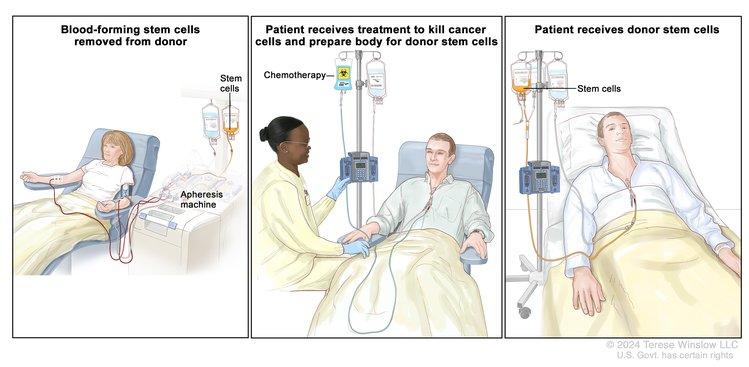How to Donate Stem Cells: A Comprehensive Guide
Stem cell donation is a life-saving procedure that provides critical treatment options for patients with blood cancers, genetic disorders, and other serious illnesses. Many people are unaware of how stem cell donation works and how they can become donors. This guide explains the process of donating stem cells, eligibility criteria, types of donation, and what to expect before, during, and after donation.
What Are Stem Cells and Why Are They Important?
Stem cells are the body’s raw materials — cells capable of developing into many different types of cells. They play a vital role in regenerating tissues and repairing damaged cells. In medicine, stem cells are used to replace diseased or damaged blood-forming cells in patients with conditions like leukemia, lymphoma, and certain genetic diseases.
Stem cell transplantation can significantly improve patient survival and quality of life. Thus, recruiting diverse and willing donors worldwide is critical.
Types of Stem Cell Donation
There are two main types of stem cell donation:
1. Peripheral Blood Stem Cell (PBSC) Donation
This is the most common and less invasive method. It involves collecting stem cells from the bloodstream through a process called apheresis. Before collection, donors receive injections of a drug called filgrastim for about five days to increase the number of stem cells in their blood.
2. Bone Marrow Donation
This traditional method involves collecting stem cells directly from the bone marrow, usually from the pelvic bone. It is a surgical procedure performed under anesthesia but generally safe. Bone marrow donation is required less frequently than PBSC.
Eligibility Criteria for Stem Cell Donors
Stem cell donation is a serious commitment. Not everyone qualifies as a donor. General eligibility requirements include:
-
Age: Usually between 18 and 44 years old (varies by country)
-
Good overall health: Free from chronic diseases, infections, or immune disorders
-
Weight and height: Generally, donors must meet certain weight/height criteria to safely undergo donation
-
No recent tattoos, piercings, or certain medical procedures
-
No history of cancer or blood disorders
Donor centers conduct thorough medical screenings to ensure the safety of both donor and recipient.
How to Register as a Stem Cell Donor
Step 1: Join a Registry
To donate stem cells, you must first register with a stem cell donor registry, such as:
-
Be The Match (US)
-
Anthony Nolan (UK)
-
Delete Blood Cancer DKMS (International)
Registration typically involves filling out a health questionnaire and providing a cheek swab or blood sample to determine your HLA (human leukocyte antigen) type — a genetic marker crucial for matching donors with recipients.
Step 2: Wait to be Matched
Once registered, your HLA profile is added to the national/international registry. Patients needing stem cell transplants are matched based on their HLA type. If you are a match, you will be contacted for further testing and donation arrangements.
The Stem Cell Donation Process
Before Donation
Once matched, donors undergo comprehensive health screenings, including blood tests and physical exams. Medical teams ensure the donor is fit and safe to proceed.
During Donation
-
PBSC Donation: Over one or two days, stem cells are collected through a process similar to blood donation. Blood is drawn, stem cells separated, and remaining blood returned to the donor. The procedure takes 4-6 hours per session.
-
Bone Marrow Donation: Donors are admitted to a hospital for a short procedure under general or regional anesthesia. Stem cells are collected from the pelvic bone via needle aspiration. Recovery typically takes a few days to a week.
After Donation
Donors might experience mild side effects like fatigue, muscle aches, or soreness but generally recover quickly. Long-term health effects are rare.
Why Donate Stem Cells? Benefits and Impact
Stem cell donation can literally save lives. Every year, thousands of patients worldwide await a compatible donor. By registering and donating, you contribute to:
-
Life-saving treatment: Helping patients with leukemia, lymphoma, and other diseases
-
Medical research: Advancing therapies for various conditions
-
Community impact: Giving hope to patients and families
Table: Comparison of PBSC and Bone Marrow Donation
| Feature | PBSC Donation | Bone Marrow Donation |
|---|---|---|
| Procedure Type | Blood cell collection via apheresis | Surgical bone marrow extraction |
| Preparation | Filgrastim injections for 5 days | No injections, surgical prep only |
| Duration | 4-6 hours per session | 1-2 hours surgical procedure |
| Recovery Time | 1-3 days | Several days to a week |
| Invasiveness | Less invasive | More invasive |
How to Prepare for Stem Cell Donation
-
Stay hydrated and eat a healthy diet leading up to donation.
-
Follow medical instructions carefully.
-
Arrange for time off work and assistance after donation if needed.
-
Stay positive and reach out to donor support groups if anxious.
Internal Resources on Vounesy.com
Learn more about donation processes and healthcare on Vounesy.com:
External Resources for Stem Cell Donation
-
Be The Match – Stem Cell Donation
https://bethematch.org/donate-stem-cells/ -
Anthony Nolan – Become a Stem Cell Donor
https://www.anthonynolan.org/ -
DKMS – Register as a Donor
https://www.dkms.org/en/register-as-donor
Conclusion
Donating stem cells is a powerful way to make a difference in the lives of patients facing life-threatening illnesses. Though the process involves commitment and medical procedures, the rewards of saving a life are immeasurable.
If you are healthy and between 18 and 44, consider registering as a stem cell donor today. Your contribution can be the hope that someone desperately needs.
For more detailed information on donation procedures and health tips, visit Vounesy.com.
